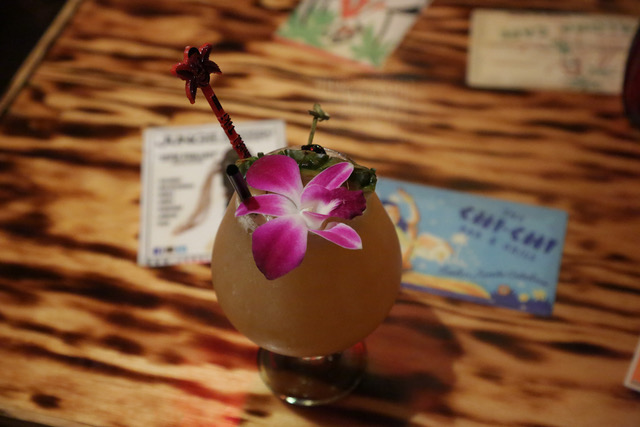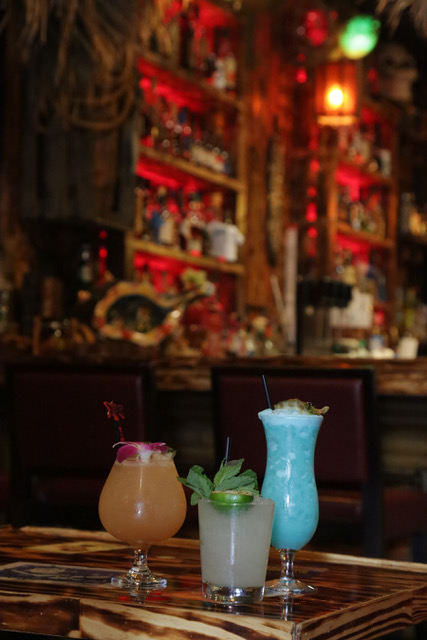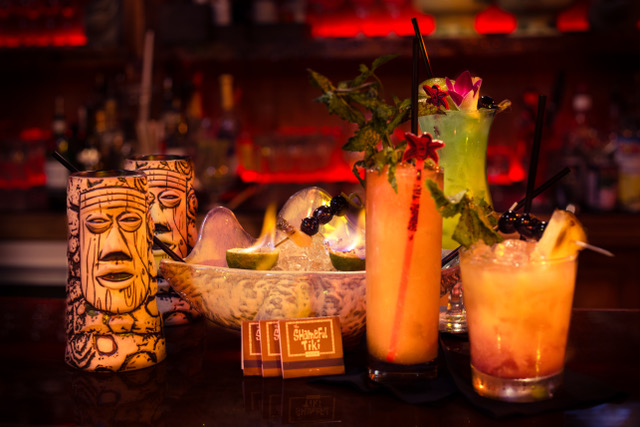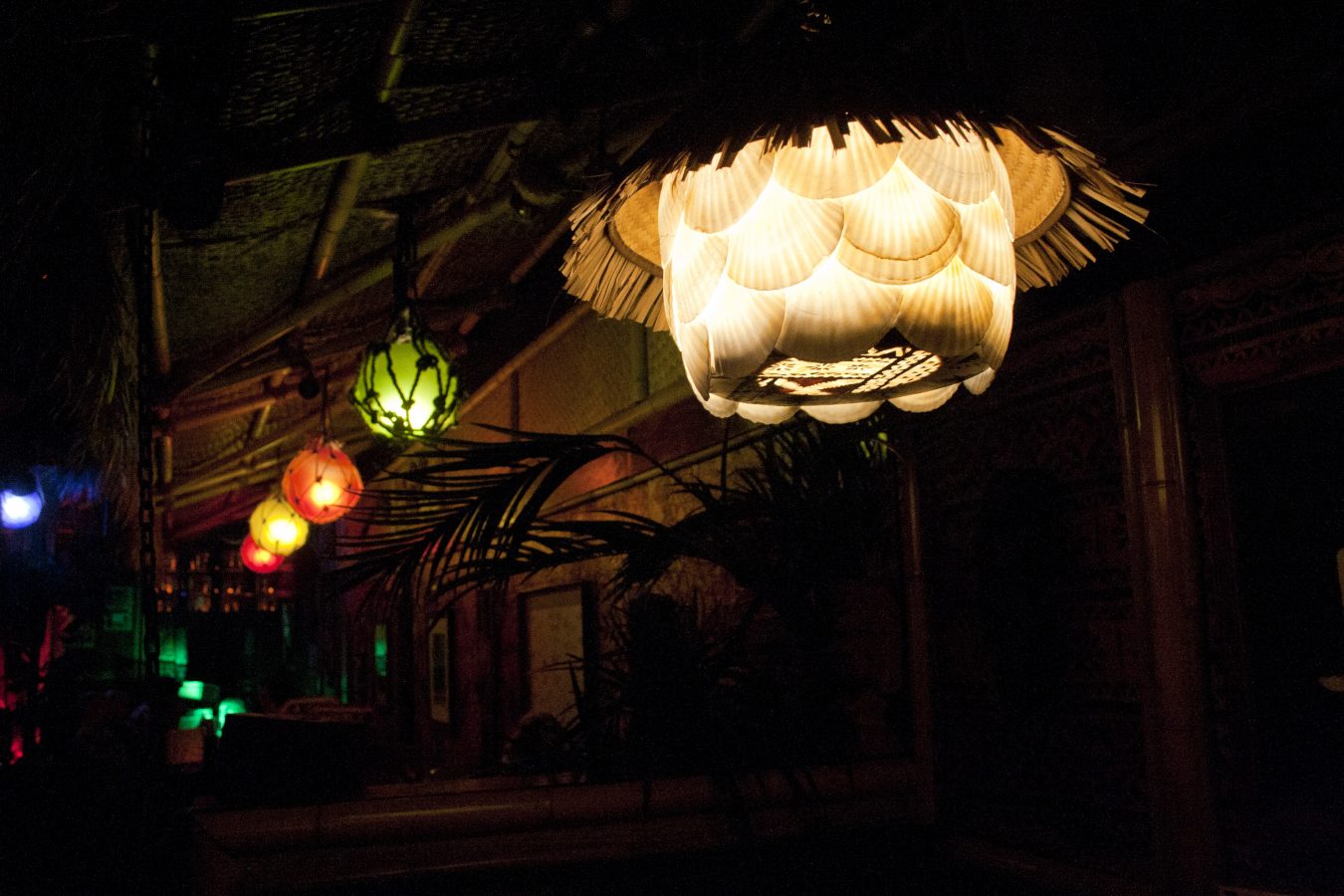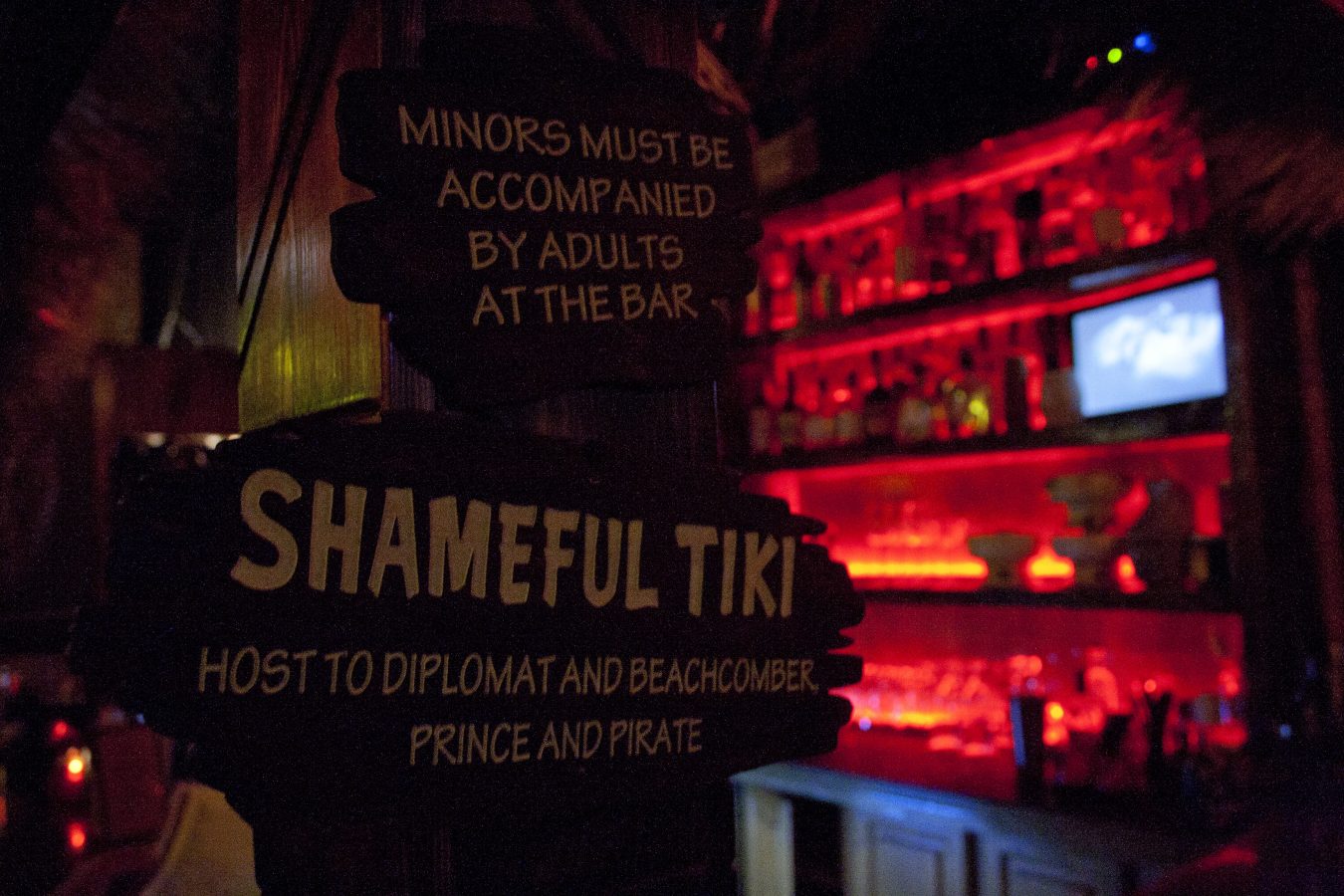When Rod Moore bought his first tiki mug on a family trip to Hawaii back in 2006, he never dreamed that it would one day change the course of his career.
“I used to be a complete sports guy,” he says with a chuckle. “I had two sporting goods stores. I was doing well with those. I played hockey, I watched hockey; typical Canadian, Vancouver guy. But then the tiki thing just took over.”
One mug led to more mugs. Then it was magazines, conventions, carvings, custom t-shirts. Then a tiki bar in his house. And finally, in March of 2013, Moore took his obsession to a whole new level, opening The Shameful Tiki Room, an intimate Main Street watering hole that draws on the best of the nearly 80-year tradition of tiki; part restaurant, part amusement park, it features surf music, flaming cocktail bowls, live entertainment, and more exotic, rum-based drinks than you can shake a Mai Tai at.
“I love the culture,” Moore explains. “I’m totally embedded in it. I just thought, ‘Wow. Wouldn’t it be great, instead of having to travel to go to these places, that we have one at home?’ Eventually, I just got sick of thinking about it, and decided to do it.”
Many of the drinks on the hand-painted menu are based on tiki staples popularized during the fad’s heyday in the 1940s and ‘50s, including the aforementioned Mai Tai, the Zombie, and the Suffering Bastard. Most are rum-based and mixed with delicious tropical juices sourced from all-natural Yaletown juicery Chaser’s. There are share bowls—including the Blood of the Kapu Tiki, Mystery Bowl, and the Volcano—that come with a straw for every person at the table and are as much fun to order as they are to drink, each involving their own specific ritual that can include lights, sound effects, and music (in the case of the Mystery Bowl, even patrons get involved, joining staff in chanting “Mystery Booooowl” at startled newcomers). For true aficionados, there is even a secret menu, featuring a series of house specials with oblique names like The Place To Be and the Blue Remembered Earth (which comes with its own LED ice cube). There are also weekly events, including Go-Go Bungalow (live go-go every Sunday), Wednesday Hula, and Mai Tai Mondays, when the beverage (once the subject of a bitter dispute over ownership between tiki pioneers Vic Bergeron and Donn Beach) is offered at a seriously shameful discount.
“I’m borrowing the best of other places,” Moore says. “Everything you look at, for the most part, I can say, ‘Well, there’s a place in California or Las Vegas, and it’s this little hole-in-the-wall place that’s been there 50 years, and they do it like this, and I thought it was so cool.’”
Like the tiki bars of old, Moore’s Vancouver restaurant is small; at a mere 1,200 square-feet, it’s able to accommodate no more than 50 people at a time. There is no phone number, but reservations—essential on Mondays, Fridays, and Saturdays—are accepted via email. The windows are blacked-out, the lighting is purposefully dim, and the space is crammed with eclectic pieces of decor, including thatched bamboo roofing, vintage tiki posters, hanging bottles, and puffer-fish lamps. Many of the decorations came from Moore’s own home, where it was part of that initial hobby tiki bar. The rest was purchased from a warehouse outside of L.A.—a place that has manufactured and distributed nothing but tiki-themed merchandise for more than 50 years.
“It’s like half the size of a Costco,” Moore recalls, laughing. “And that’s all they sell: carvings, and masks, and bamboo, and matting—all that stuff. Up here, you’d think, ‘That’s the worst business venture ever.’ But in the ‘50s and ‘60s, they were outfitting every Trader Vic’s, every Don the Beachcomber. They had more business than they knew what to do with. And they’re still there, except now they’re 80 years old. They’ve got their hearing-aids, and they’re yelling at you. It’s hilarious. It’s like a time-warp.”
While early Maori mythology makes reference to “Tiki” as the First Man, Moore is quick to point out that North American tiki bears only a passing resemblance to the Polynesian culture it was appropriated from. “Although tiki culture is based off of this Polynesian fantasy, it’s not really Hawaiian,” he explains. “True Hawaiian people, they never had those drinks. It’s something that Americans made up before Hawaii was even an American state.”
In fact, American tiki culture began in 1933 with the opening of Don the Beachcomber, a Polynesian-themed restaurant in Hollywood. Owner Ernest Raymond Beaumont-Gantt (who later legally changed his name to Donn Beach) is credited with inventing many of the tiki drinks that endure to today (rum then being the cheapest spirit available), and Don the Beachcomber quickly became a hotspot for celebrities—including Charlie Chaplin, Howard Hughes, and Frank Sinatra—throughout the ‘40s and ‘50s.
Hawaiian statehood in 1959 pushed tiki culture even further into the American mainstream, and bars started popping up all over the States and Canada, including Trader Vic’s, Tiki-Ti, the Bali Hai, and Latitude 29. And as the culture blossomed, it began to encompass more than just restaurants, expanding into fashion, architecture, and music. Both Trader Vic’s and Don the Beachcomber grew into franchises with locations all over America (Beachcomber’s Waikiki location was said to have a myna bird that was trained to say, “Give me a beer, stupid!”).
As the 1970s rolled around, tiki fell out of fashion, and by the 1990s, many restaurants had closed their doors. However, in the early part of the 21st century, it experienced a surprising resurgence—not just south of the border, but here in Canada, too. After having shut down completely, Don the Beachcomber opened a brand-new California location in 2009. Events like Tiki Oasis in San Diego or Tiki Caliente in Palm Springs (where Moore recently played with his surf band, the Hang-Ten Hangmen) draw more than 4,000 people, featuring carvers, music, vendors, and go-go dancers. News and events are discussed in the pages of Tiki Magazine, or in online communities like the Fraternal Order of Moai. As for The Shameful Tiki Room, while it took a few years to really get off the ground, Moore’s bar is now more popular than ever; not only is it busy virtually every night of the week, but it’s also been able to expand into a second location on Queen Street in Toronto.
“It took two-and-a-half years to get rolling,” Moore recalls. “Somewhere in the third year, it started to get busier, and in the fourth year, it got even busier, and this year, it got exceptionally busy—to the point where we had to reconfigure our reservation policy, because we were turning so many people away.” Moving forward, Moore has no plans to let his tiki obsession slow down. In addition to leading the Vancouver and Toronto Shameful Tikis, he also carves, takes his surf band to conventions, runs The Modern Bartender cocktail shop in Vancouver’s Chinatown, and is beginning a build-out on his next restaurant venture here (rumoured to be haunted-mansion-themed). But the real question is: after so many years embedded in the world of tiki, does he ever want to go back to sporting goods?
Moore laughs. “About six months ago, the guy who bought my old business started asking if I wanted to buy it back. It kind of tugs at my heartstrings, and I think, ‘Oh, man. That was my first business. I loved it so much, and I put my heart and soul into it. Maybe I can go back and do that.’ But I already have three businesses, and I just bought another location, so having my own hockey store, and working full-time behind the counter again—it’s near and dear to my heart, but it’s not even physically possible.” If something’s got to give, at least it’s not the tiki.
Read more about hidden Food and Drink gems in Vancouver and beyond.
